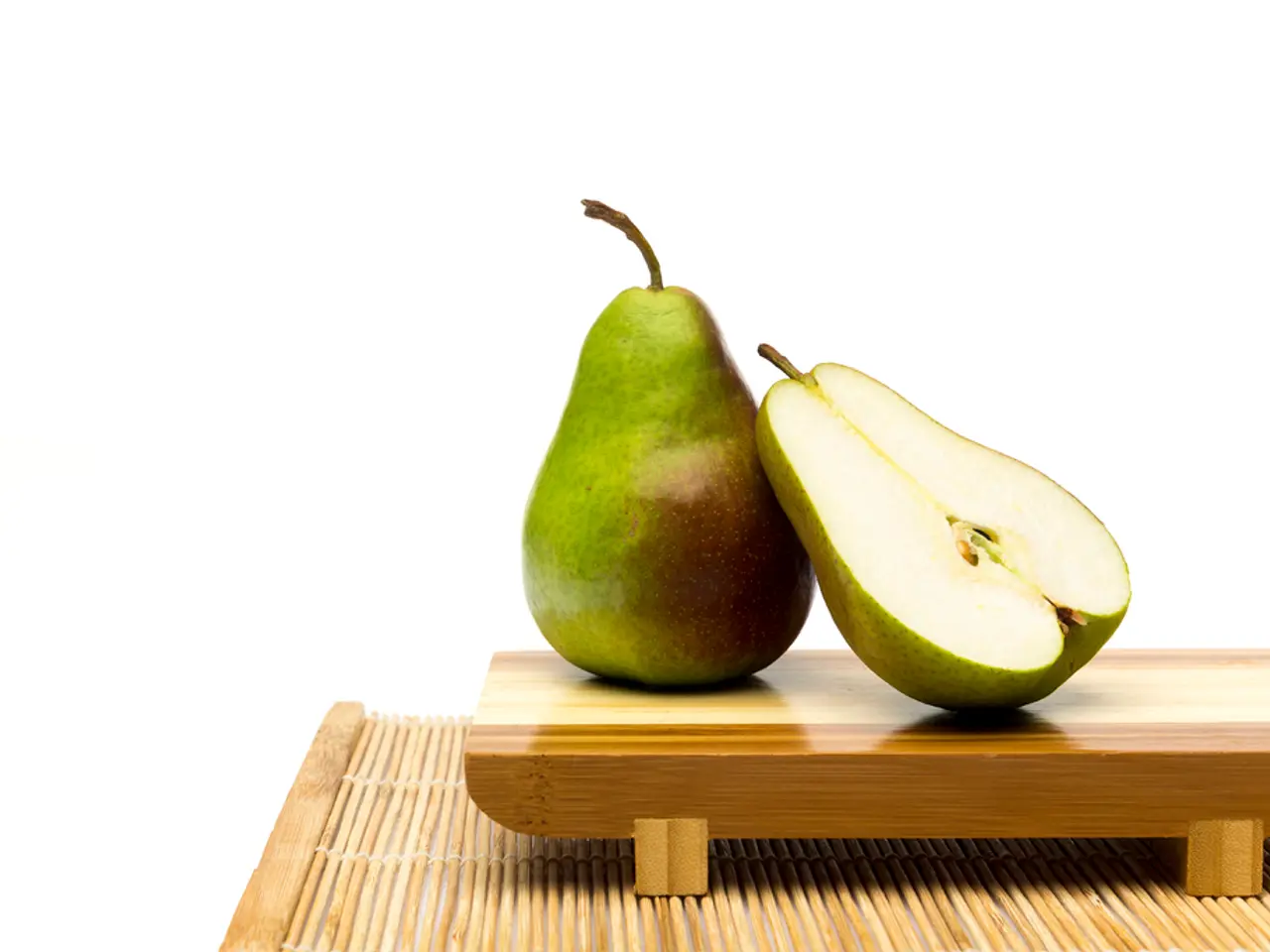Steps for Pear Cultivation
Caring for Your Pear Trees: A Comprehensive Guide
Pear trees are a delightful addition to any garden, offering both beauty and delicious fruit. Here's a guide to help you cultivate healthy, fruitful pear trees.
Planting and Growth
Pear trees thrive in moist but free-draining soil in full-sun to partial shade. For best results, grow them against a south-facing wall or fence. When planting bare-root pear trees, dig a square-shaped hole to allow the roots to spread evenly into the surrounding soil.
There are numerous pear cultivars to choose from, each with unique characteristics. For instance, 'Pyrus communis' 'Concorde', a cross between 'Conference' and 'Doyenne du Comice', produces good crops of well-flavored fruit. 'Pyrus communis' 'Beurre Hardy' is a popular French dessert pear with an excellent flavor and good-textured flesh.
Pruning and Training
Pruning is essential for the health and productivity of pear trees. Prune them when dormant in midwinter. Summer pruning is also important for fan- and espalier-trained pears to improve air circulation and remove unwanted growth. Standard pears should be pruned in winter.
Mulching and Watering
Mulch pear trees annually with well-rotted manure to maintain soil fertility and retain moisture. Water pear trees in dry spells to keep them healthy.
Sunlight and Location
Watch out for frosts when pear blossom appears in early spring and protect trees with fleece if necessary. Pear trees can be grown in smaller spaces and containers, including dwarf fruit trees.
Identifying and Treating Common Diseases and Pests
To identify and treat common pear tree diseases and pests, focus primarily on fire blight, one of the most destructive bacterial diseases affecting pear trees. Fire blight causes blackened, wilted leaves and branches that often curl in a "shepherd’s crook" shape, water-soaked blossoms, and cankers on twigs and limbs.
For fire blight, prune out and destroy infected branches during the dormant season, cutting 12–20 inches below visible symptoms to remove infected tissue. Avoid heavy pruning during the growing season since it can spread the disease. Apply copper-based bactericides/fungicides early in spring before bloom and streptomycin during bloom.
Other common diseases include fungal infections such as black knot. Prune infected branches during dormancy and remove nodules as they form during the growing season. Use sulfur-based pesticides or lime sulfur sprays as a last resort.
Common pests include aphids, Japanese beetles, and stink bugs, which can damage leaves and fruits. Apply insecticides like malathion pre-bloom against these pests, but avoid insecticides during bloom to protect pollinators. Use sprays such as zeta-cypermethrin post-bloom if needed.
General Preventive Tips
Maintain good orchard sanitation by removing fallen leaves and debris. Avoid excessive nitrogen fertilization. Water properly and maintain tree vigor. Early detection and rapid pruning/removal of infected parts reduce spread. Choose disease-resistant tree varieties where possible.
Harvesting and Enjoying Your Pear Crop
Pear harvesting should be done from late August onwards, and the fruit should be picked when it is still firm. Pears can be stored for several months as most varieties ripen better off the tree.
Pears are versatile fruits that can be eaten raw or cooked. They are delicious with blue cheese, hams, stewed with spices in red wine, and more.
In Summary
Caring for pear trees involves early identification of symptoms like scorched branches (fire blight), black nodules (black knot), and monitoring for pests, along with timely pruning, appropriate chemical treatments such as copper sprays and insecticides, and cultural practices that enhance tree resistance and prevent disease spread. With the right care, you can enjoy a bountiful harvest of delicious, home-grown pears.
By growing pear trees in your home-and-garden, you can enrich your lifestyle with both visual appeal and scrumptious produce. To ensure the success of your pear trees, consider the tips for planting, growth, pruning, mulching, watering, and light exposure detailed in this guide.




